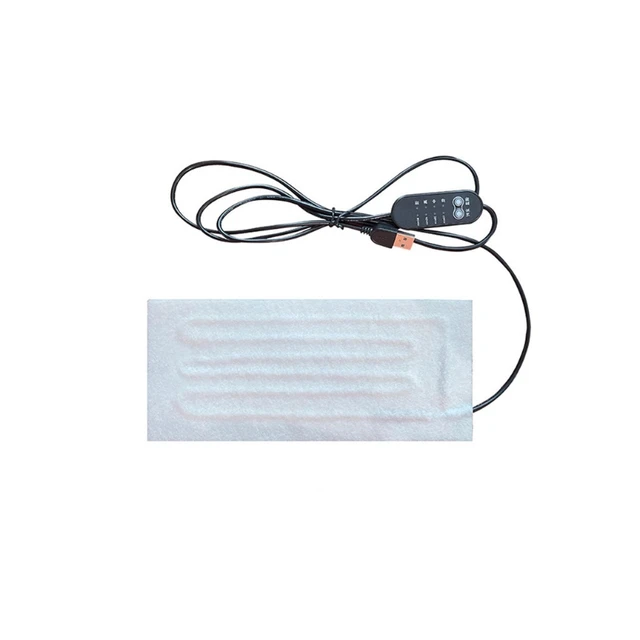
What is the best ingredient for homemade heating pad?
Introduction
Homemade heating pads offer a cost-effective and convenient way to soothe sore muscles, alleviate pain, and provide comfort. When making a heating pad at home, selecting the right ingredients is essential to ensure optimal heat retention, safety, and effectiveness. In this guide, we will explore the best ingredients to use for a homemade heating pad. From rice and flaxseed to dried herbs and essential oils, we will provide specific recommendations, discussing their benefits, how to prepare them, and important considerations to keep in mind.

What is the best ingredient for homemade heating pad?
Rice
1.1. Excellent Heat Retention
Rice is a popular choice for homemade heating pads due to its excellent heat retention properties. It absorbs and retains heat well, allowing for long-lasting warmth when heated. Additionally, rice grains conform to the body’s contours, providing a comfortable and soothing experience.
1.2. Easy Accessibility and Affordability
Rice is readily available in most households, making it a convenient ingredient for a homemade heating pad. It is also an affordable option, making it accessible to those on a budget.
1.3. Preparing a Rice Heating Pad
To create a rice heating pad, start by selecting a clean, natural fabric such as cotton or flannel. Cut the fabric into a rectangle or square shape, leaving a small opening for filling. Fill the pouch with rice, leaving enough room for the grains to move and allow for proper coverage. Sew the opening securely, ensuring the rice is contained within the pouch. To heat, place the rice heating pad in the microwave for 1-2 minutes, testing the temperature before applying it to your body.

Flaxseed
2.1. Even Heat Distribution
Flaxseed is another popular ingredient for homemade heating pads. It offers excellent heat retention and distributes heat evenly throughout the pad. This ensures that the warmth is evenly spread across the affected area, providing maximum comfort and relief.
2.2. Natural Moisture Retention
Flaxseed has the unique ability to retain moisture, allowing it to release moist heat when heated. This can be beneficial for those seeking a moist heat therapy experience, which can help soothe dry skin and provide additional comfort.
2.3. Creating a Flaxseed Heating Pad
To make a flaxseed heating pad, follow a similar process as with a rice pad. Use a natural fabric to create a pouch and fill it with flaxseeds. Leave some room for the seeds to move around for better heat distribution. Once filled, securely stitch the opening. When heating, place the flaxseed heating pad in the microwave for approximately 1-2 minutes, ensuring it reaches the desired temperature before use.
Dried Herbs
3.1. Therapeutic Properties
Adding dried herbs to a homemade heating pad can provide additional therapeutic benefits. Different herbs offer various properties, such as relaxation, pain relief, or soothing effects. Popular herbs for heating pads include lavender, chamomile, peppermint, and eucalyptus.
3.2. Calming and Soothing Effects
Lavender and chamomile are well-known for their calming properties and can promote relaxation and relieve stress. Peppermint offers a cooling sensation and may help alleviate headaches and muscle tension. Eucalyptus has a refreshing scent and can help relieve congestion and clear the mind.
3.3. Preparing a Dried Herb Heating Pad
To incorporate dried herbs into a heating pad, mix the herbs with the rice or flaxseed before filling the pouch. Ensure that the herbs are thoroughly dried to prevent mold or moisture buildup. The herbs will release their fragrances when heated, enhancing the overall relaxation and therapeutic experience.

Essential Oils
4.1. Aromatherapy Benefits
Essential oils can be a wonderful addition to a homemade heating pad, providing aromatherapy benefits alongside the heat therapy. Different essential oils offer unique properties, such as relaxation, pain relief, or invigoration, and can enhance the overall experience.
4.2. Proper Dilution and Safety
When using essential oils, it is crucial to ensure proper dilution to prevent skin irritation or adverse reactions. Dilute the essential oil with a carrier oil, such as almond, coconut, or jojoba oil, before applying it to the heating pad. Adhere to recommended dilution ratios and consider individual sensitivities or allergies.
4.3. Applying Essential Oils to a Heating Pad
To incorporate essential oils into a heating pad, add a few drops of the diluted oil onto the fabric before filling the pouch with rice or flaxseed. The heat from the pad will activate the aroma, allowing you to enjoy the therapeutic benefits of the essential oil during your heat therapy session.
Safety Considerations
5.1. Heating Pad Temperature
It is essential to pay attention to the temperature of the heating pad to prevent burns or discomfort. Always test the heating pad on the back of your hand or forearm before applying it to more sensitive areas of the body. Adjust the heating time accordingly to achieve a safe and comfortable temperature.
5.2. Moisture and Mold Prevention
To prevent moisture buildup and mold growth, ensure that both the ingredients and fabric are completely dry before assembling the heating pad. Store the pad in a dry, well-ventilated area between uses to maintain its freshness and effectiveness.
5.3. Personal Sensitivities and Allergies
Consider any personal sensitivities or allergies when selecting ingredients for your homemade heating pad. Avoid ingredients that may cause skin irritation or adverse reactions. If you have any concerns, consult with a healthcare professional before using the heating pad.

Other Ingredients to Consider
6.1. Corn
Corn is another option for a homemade heating pad. Like rice and flaxseed, it retains heat well and conforms to the body’s contours. Corn can be an excellent choice for individuals with allergies to rice or flaxseed. Follow the same process as with rice or flaxseed to create a corn heating pad.
6.2. Barley
Barley grains can also be used as a filling for a homemade heating pad. They offer good heat retention and can provide a comfortable and soothing experience. Barley is often used in combination with other ingredients like rice or flaxseed to create a customized filling.
6.3. Buckwheat
Buckwheat hulls are a popular choice for filling heating pads. They offer a unique texture and conform well to the body. Buckwheat has natural air circulation properties, allowing the pad to stay cooler for longer periods. This can be beneficial for individuals who prefer a slightly cooler heat therapy experience.

Fabric Options
7.1. Natural Fabrics
When making a homemade heating pad, opt for natural fabrics such as cotton, flannel, or muslin. These materials are breathable, heat-resistant, and provide a comfortable feel against the skin. Avoid synthetic fabrics as they may not retain heat as effectively and can pose a risk when heated.
7.2. Fabric Care
Ensure that the fabric used for the heating pad is clean and free from any chemicals or toxins. Wash and dry the fabric before assembling the heating pad to remove any dirt or residue that may be present.
Conclusion
When creating a homemade heating pad, several ingredients offer effective heat retention, comfort, and therapeutic benefits. Rice and flaxseed are popular choices, providing excellent heat distribution and long-lasting warmth. Adding dried herbs or essential oils can enhance the relaxation and therapeutic experience. By selecting natural fabrics, properly preparing the ingredients, and considering safety precautions, you can create a homemade heating pad that suits your needs and provides soothing relief for sore muscles and discomfort. Experiment with different ingredients and scents to personalize your heat therapy experience and enjoy the comfort and relaxation it brings.












Leave a Reply
You must be logged in to post a comment.